
Cerebral Paralysis and Epilepsy
Introduction: Cerebral palsy is the most common cause of severe neuromotor disorders in children. The prevalence of cerebral palsy varies from country to state, and is usually 2-3 cases / 1000 live births, both in Europe (1) and the rest of the world (2).In the definition formulated at the Batexa conference, motor disorders that are dominant in cerebral palsy are often associated with multiple disorders (3), as well as epilepsy. The incidence of epilepsy in children with cerebral palsy exhibits a large dispersion and ranges from 15-60, or 15-90% (4). The prevalence of epilepsy depends on the type of motor damage. Epileptic seizures are most common in children with spastic quadriplegia and hemiplegia (5). In spastic diplegia, the incidence is lower, while the frequency of epilepsy in both the diskinetic and the ataxic form is extremely low (6).Epileptogenic EEG changes have 90-94% of children with epilepsy (7). Early drug administration (after the first attack) is advised for the risk of relapse, epi status and possible pharmacovidence (8).
Material and methods: We retrospectively followed the 51 patient with cerebral palsy and epilepsy.
Results:
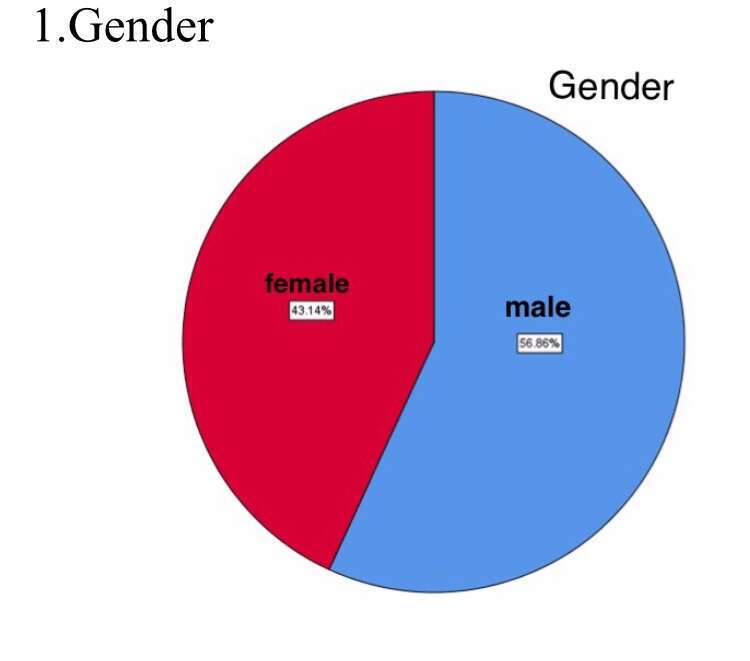

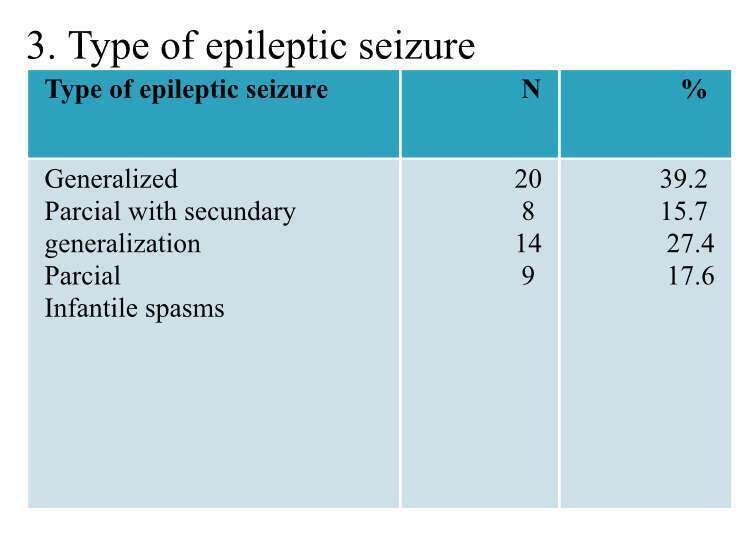
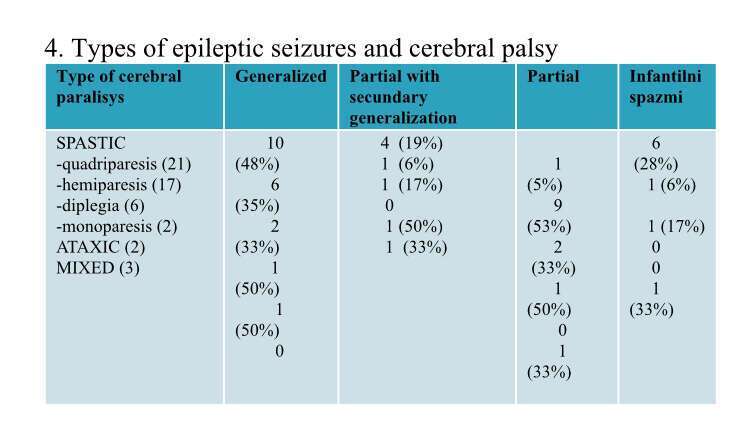
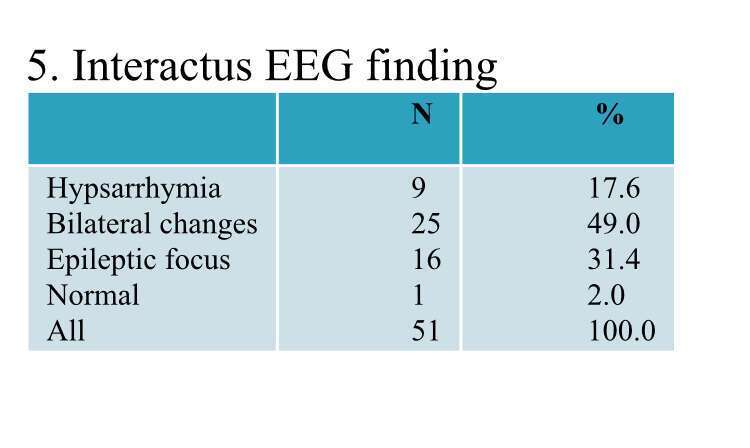
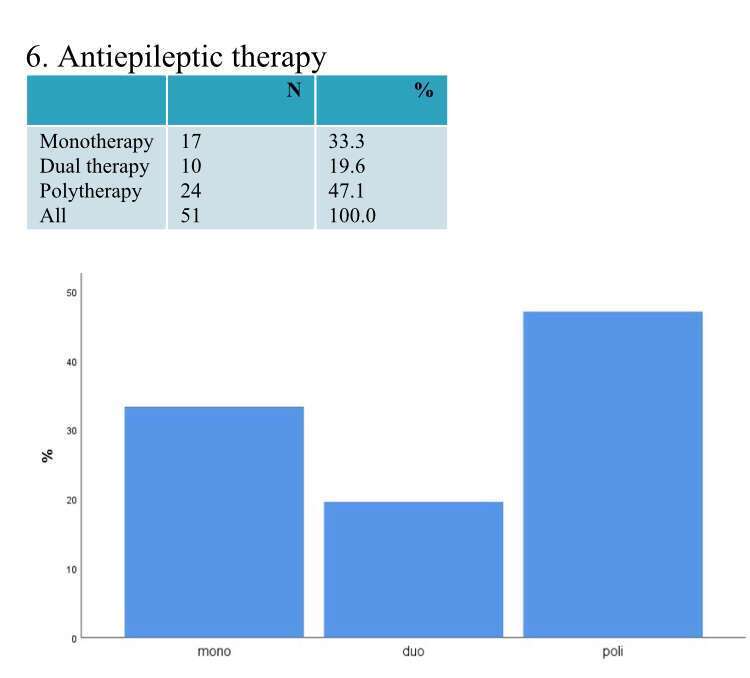
Conclusion: In the survey, the male gender was slightly dominated. The dominant form of CP was spastic quadriparesis and spastic hemiparesis. The dominant type of attack is generalized attacks, then partial with and without secondary generalization as well as infantile spasms. Dominant EEG changes were bilateral, followed by epileptic focus, hypsarrhythmia, and only one patient had a normal. The majority of patients used polytherapy followed by mono- and dual therapy. Remission is achieved in more than half of patients. All patients who exhibited pharmacotherapy were in the field of polytherapy.
Powered by Eventact EMS